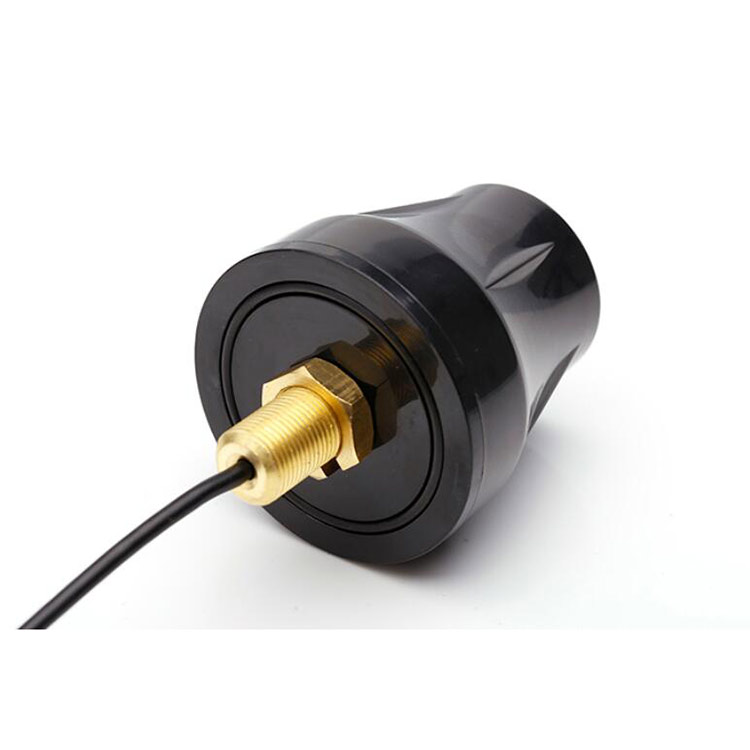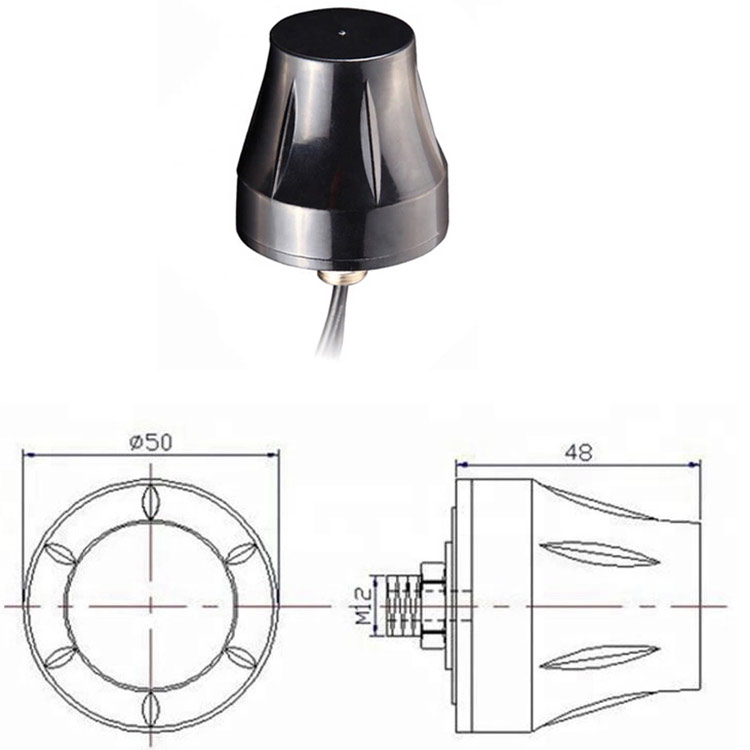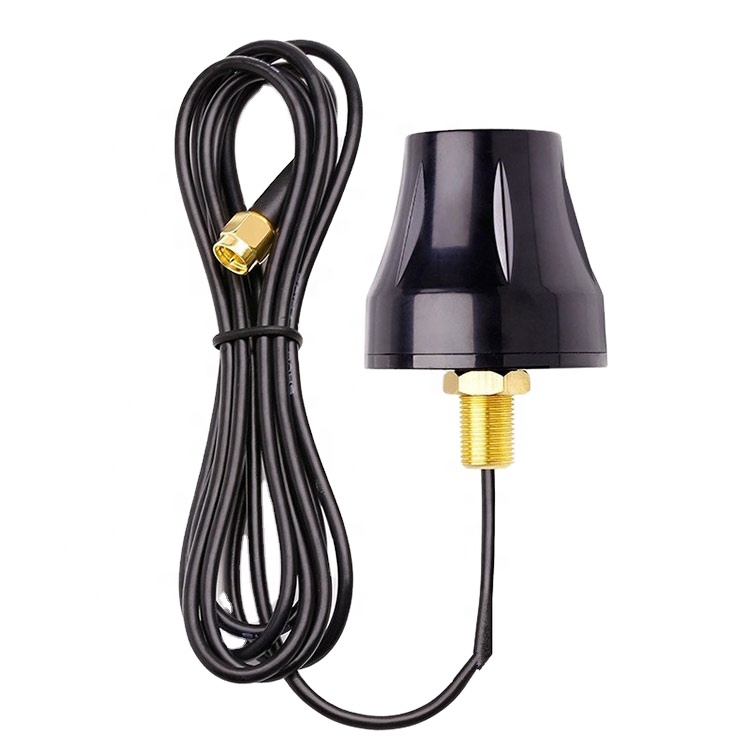Screw mount waterproof GPS antennas with cables are integral to a diverse range of industries, where their durability, stability and reliable signal performance address critical operational needs. Below is a detailed breakdown of their key applications and emerging future trends, which reflect the evolving demands of technology and industry.
Key Applications
Marine Navigation and Vessel Tracking
The marine industry is one of the largest adopters of screw mount waterproof GPS antennas, as vessels operate in environments where saltwater, high humidity, and rough seas are constant challenges. Small boats, yachts, commercial cargo ships, and even offshore oil rigs rely on these antennas for accurate navigation, route planning, and position reporting. For example, cargo ships use them to comply with international maritime regulations (such as the International Maritime Organization’s SOLAS 公约) that require real-time tracking to ensure safe passage and prevent collisions. The waterproof enclosure (often IP68 or IP69K-rated) resists saltwater corrosion, while the screw mount secures the antenna to the ship’s deck or mast—even in heavy winds and waves. Additionally, the shielded cable minimizes interference from on-board electronics (e.g., radar systems, communication radios), ensuring consistent signal reception for both GPS and GLONASS (Russia’s satellite navigation system) signals.
Automotive and Fleet Management
In the automotive sector, these antennas are widely used in commercial fleets (trucks, delivery vans, buses) and off-road vehicles (construction trucks, agricultural tractors) that operate in all weather conditions. Fleet management companies depend on them to track vehicle location, monitor driver behavior, and optimize routes—critical for reducing fuel costs and improving delivery efficiency. For instance, a logistics company with a fleet of 100 trucks can use screw mount waterproof antennas to track each vehicle’s real-time position, even when driving through rain, snow, or dusty construction zones. The screw mount ensures the antenna stays fixed to the vehicle’s roof, avoiding dislodgment from vibration or high speeds, while the waterproof enclosure protects against rain and road spray. Off-road vehicles, such as tractors used in agriculture, benefit from the antenna’s durability—they can withstand mud, fertilizer exposure, and extreme temperature fluctuations (from freezing winters to hot summers) without compromising performance.
Industrial and Construction Equipment
Construction sites are harsh environments for electronics, with dust, debris, heavy vibration, and frequent exposure to rain. Screw mount waterproof GPS antennas are used in construction equipment such as excavators, cranes, and bulldozers to enable precision positioning and asset tracking. For example, a crane operator relies on GPS to position loads accurately, reducing the risk of accidents and improving productivity. The antenna’s IP67 or IP68 rating keeps dust and rain out of internal components, while the screw mount secures it to the equipment’s cab or frame—even during heavy vibration from digging or lifting. Additionally, these antennas are integrated into IoT (Internet of Things) sensors on construction sites to track the location of tools and materials, preventing theft and ensuring efficient resource allocation.
Outdoor IoT and Asset Tracking
The growth of the IoT has expanded the use of screw mount waterproof GPS antennas to small, portable devices such as asset trackers for shipping containers, livestock collars, and environmental monitoring sensors. Shipping containers, which are exposed to rain, saltwater, and rough handling during transit, use these antennas to track their location across oceans and land. Livestock collars, used in agriculture to monitor the movement of cattle or sheep, rely on the antenna’s waterproof design to withstand rain and mud, while the screw mount ensures the antenna stays attached to the collar (even when animals rub against fences or trees). Environmental monitoring sensors—deployed in forests, mountains, or coastal areas to measure temperature, humidity, and air quality—use these antennas to transmit location-tagged data to central servers, enabling researchers to track environmental changes with precision.
Future Trends
Integration with Multi-Constellation Navigation Systems
While current screw mount waterproof GPS antennas primarily support the GPS L1 band, future models will increasingly integrate support for multi-constellation systems, including GLONASS (Russia), Galileo (Europe), BeiDou (China), and QZSS (Japan). This integration will improve signal availability and accuracy, especially in challenging environments such as urban canyons (where tall buildings block GPS signals) or dense forests. For example, a multi-constellation antenna can receive signals from both GPS and Galileo satellites, increasing the number of visible satellites and reducing position errors from several meters to less than a meter. This trend is driven by the growing demand for high-precision positioning in applications such as autonomous vehicles, precision agriculture, and drone navigation.
Miniaturization and Low-Power Design
As IoT devices become smaller and more portable, there is a growing need for smaller, lighter screw mount waterproof GPS antennas with lower power consumption. Future models will use advanced materials (such as flexible ceramics or carbon fiber) to reduce the antenna’s size and weight, making them suitable for tiny devices like wearable trackers or small asset tags. Additionally, improvements in LNA (Low Noise Amplifier) technology will reduce power consumption, extending the battery life of IoT devices. For example, a small livestock collar with a miniaturized antenna could operate for months on a single battery charge, eliminating the need for frequent recharging or battery replacement.
Enhanced Environmental Resistance
While current antennas meet IP67, IP68, or IP69K standards, future models will offer even greater environmental resilience. This includes resistance to extreme temperatures (ranging from -50°C to 100°C, suitable for polar research or desert environments), chemical exposure (such as harsh industrial solvents or agricultural pesticides), and even mechanical impact (e.g., being hit by falling debris on a construction site). Manufacturers will achieve this by using advanced materials such as titanium alloys for the enclosure (for impact resistance) and fluoropolymers for the cable jacket (for chemical resistance). Additionally, self-heating elements may be integrated into the antenna to prevent ice buildup in cold environments, ensuring consistent signal reception in snowy or icy conditions.
Smart Antenna Features
Future screw mount waterproof GPS antennas will incorporate smart features such as signal filtering, adaptive gain control, and remote monitoring. Signal filtering technology will automatically reduce interference from 5G or Wi-Fi signals (which operate in nearby frequency bands), ensuring GPS signals remain clear. Adaptive gain control will adjust the LNA’s gain based on signal strength—increasing gain in weak signal areas (e.g., urban canyons) and reducing gain in strong signal areas (e.g., open fields) to prevent signal distortion. Remote monitoring will allow users to check the antenna’s performance (e.g., signal strength, temperature, waterproof integrity) via a mobile app or cloud platform, enabling proactive maintenance and reducing downtime. For example, a fleet manager could receive an alert if an antenna’s signal strength drops below a threshold, indicating a potential issue (such as a damaged cable) that needs to be addressed.
Sustainability and Recyclable Materials
As industries focus on reducing their environmental impact, future screw mount waterproof GPS antennas will be designed with sustainability in mind. Manufacturers will use recyclable materials for the enclosure (such as recycled ABS plastic) and cable (recycled copper for the conductor), reducing the antenna’s carbon footprint. Additionally, modular designs will allow components (such as the LNA or cable) to be replaced individually, extending the antenna’s lifespan and reducing electronic waste. For example, if a cable is damaged, it can be replaced without discarding the entire antenna—saving resources and reducing costs for users.
Conclusion
The screw mount waterproof GPS antenna with cable is a critical component that enables reliable GPS signal reception in harsh, outdoor environments—addressing the limitations of non-waterproof, poorly secured alternatives. Throughout this analysis, we have explored its core features, design principles, working mechanisms, advantages, challenges, applications, and future trends, revealing its indispensable role in industries ranging from marine navigation to IoT asset tracking.
At its core, this antenna type succeeds because it balances three key priorities: environmental durability, mechanical stability, and signal performance. The waterproof enclosure (compliant with IP67, IP68, or IP69K standards) protects internal components from water, dust, and chemicals, while the screw mount ensures secure, permanent installation—even in high-wind, high-vibration environments. The shielded coaxial cable and integrated LNA minimize signal loss and interference, ensuring that weak GPS satellite signals are captured, amplified, and transmitted to the receiver with accuracy.
While the antenna faces challenges—such as installation complexity, signal blockage, and higher costs—these can be mitigated through careful planning (e.g., selecting optimal mounting locations), proper cable management, and recognizing the long-term value of durability (which reduces replacement costs over time). Its versatility is evident in its wide range of applications: from guiding cargo ships through rough seas to tracking livestock in muddy fields, it adapts to diverse operational needs, making it a staple in industries where GPS performance cannot be compromised by the elements.
Looking to the future, the screw mount waterproof GPS antenna will continue to evolve, driven by advances in multi-constellation navigation, miniaturization, smart technology, and sustainability. These innovations will expand its capabilities—improving accuracy in challenging environments, reducing power consumption for IoT devices, and minimizing environmental impact—ensuring it remains relevant in an increasingly connected, technology-driven world.
In summary, the screw mount waterproof GPS antenna with cable is more than just a hardware component: it is a enabler of efficiency, safety, and innovation across industries. As outdoor and ruggedized technology continues to grow, its role will only become more critical—providing the reliable, accurate positioning that underpins modern operations, from fleet management to environmental research. For users seeking a GPS antenna that can withstand the toughest conditions while delivering consistent performance, this variant remains the gold standard.




































































 Language
Language
 En
En Cn
Cn Korean
Korean

 Home >
Home > 








 18665803017 (Macro)
18665803017 (Macro)













